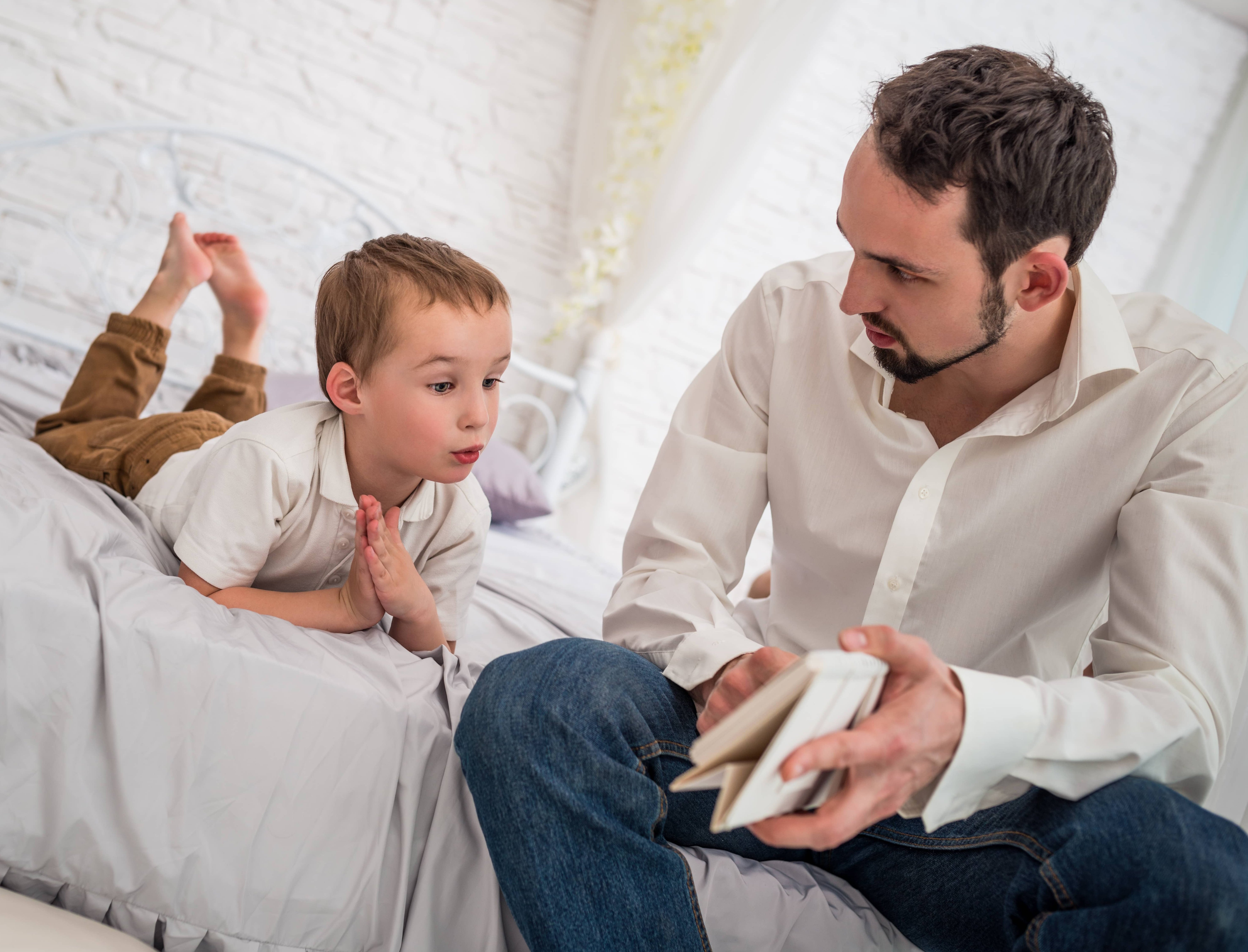No parent wants their child to become an uncaring, disrespectful adult. And most parents do their best to provide a loving home. However, this one key parenting skill is largely overlooked, yet its absence hinders children’s development of empathy. If you want your kids to learn empathy, master this one thing!
Estimated reading time: 10 minutes
 Table of Contents: Jump to what you think will be most helpful.
Table of Contents: Jump to what you think will be most helpful.
Parenting Mistakes: Biggest Oversight for Parents
Examples of Common Parenting Behaviors
Positive Parenting Behaviors That Build Empathy
Teaching Kids Empathy
The Empathy Effect
Parenting Skills to Develop Empathy and Foster Understanding
Conclusion
Frequently Asked Questions
Parenting Mistakes: Biggest Oversight for Parents
Typically, when I coach parents, they come with a long laundry list of their children's annoying and upsetting behaviors. After they air their frustrations and settle, I ask them several questions.
First, I ask: "What is the behavior you WANT to see in your child or teen?"
Of course, many parents reply: kindness, empathy, and respect. Some say responsibility, a few others say obedience.
My next question nearly always dumbfounds parents, no matter how long they've been parents or how lovingly they parent.
"Are you modeling the behavior you desire to see in your children?"
In two decades of conducting parenting classes, visiting homes for behavioral consults, and doing parenting and family coaching, this question, 99% of the time, causes parents to pause.
Why?
Because parents have their attention entirely on their children’s behavior and what they want to change! And they have neglected the biggest influence in their children’s lives: themselves!
Parents forget the one cardinal rule: the most significant learning and impact comes from parents.

Examples of Common Parenting Behaviors
Let's take a quick assessment. Read through the list below.
Put a mental check next to any parental actions you think build empathy.
- reminding - "Did you do your homework?" "Have you cleaned your bedroom yet?" "Don't forget to brush your teeth!"
- demanding - "Clean up your room now."
- doing for the child - doing things for a child that they are capable of doing themselves, for example, cleaning a bedroom for an elementary child, preteen, or teen.
- talking for the child - "He's shy but he appreciates your help."
- solving problems for the child - "You should just tell your friend ..."
- rescuing - "Oh, let me do that for you, sweetie."
- nagging - "When are you going to stop..." "I'm tired of asking..."
- yelling - "Stop that bickering right now!"
- correcting - "Sit up straight and chew with your mouth closed."
- reactive disciplining - "I'm taking your phone for a week."
- scolding - "Stop pestering your sister, it's just plain mean."
- lecturing - "How many times do I have to tell you to stop cracking your knuckles."
- moralizing - "I can't believe you hit your brother. We are loving in this family and that is unacceptable."
- comparing to others - "Your sister got straight A's in math."
- punishing - "You're grounded for a month."
- criticizing - "If you're going to be a goalie, you need to be more alert! You should have blocked that last corner kick."
- censoring - "Shh" "Don't say that, it's rude."
- interrupting - "No, that's incorrect!"
- talking over - "I have a better way."
- minimizing - "You can do better." or "That wasn't so bad; don't make such a big deal out of it."
- ignoring - parent completely ignores child hoping the behavior will go away.
- denying or stuffing feelings - "Don't say you hate your sister; you don't mean that." or "Stop being so angry!"
- overpowering - forcefully picking up a toddler and forcing them into a car seat
- shaming - "Don't be so stupid!" (or sassy, lazy, clumsy, etc.)
- slapping, spanking, grabbing, shaking - Ouch!
And then there's the look!
You know that look that dates back generations of parents. Every child knows the look.
My guess is that you didn't check too many boxes.
Do you think a child is more or less likely to learn empathy when parents exhibit these responses?
And yet, these parental behaviors are often part of a child's daily life, sometimes multiple times a day! Most of these actions are called feeling stuffers and can quickly happen when a parent is stressed.

However, guess what's foundational to empathy? Emotional awareness, healthy emotional expression, and emotional regulation!
How can a child learn about healthy expression of emotions from parents fighting? And how will children build a healthy relationship with their emotions when we as parents fail to calm ourselves or shut our child's emotions down?
It's human to err.
It's human to make mistakes.
Parents are human.
Parenting is tough—the only job on the planet that is 24/7!
And parents are under-supported and overworked—they do their best. Many grandparents and extended families live thousands of miles away and cannot help or mentor. Rarely do parents go to parenting classes before having a baby; they usually wait until their children's misbehavior is too much for them.
So, first: have compassion for yourself as a parent!
We need to have immense empathy for ourselves on the parenting journey, take extreme care of ourselves, and learn emotional intelligence skills to ease our parenting challenges.
Being more resilient goes a long, long way to preventing parenting burnout.
Positive Parenting Behaviors that Build Empathy
Now, let's look at a different list of parenting behaviors when a parent is equipped with emotional intelligence.
- listens attentively
- validates feelings
- empathizes with the child's emotions
- mirrors their body language
- gets curious
- encourages
- lovingly supports but allows them to find their own solutions
- uses positive reinforcement
- gives words of affirmation
- teaches skills
- expresses loving affection
Now, you can probably check everyone listed, right?
But notice how short the list is!
Teaching Kids Empathy
So, you've probably guessed what the ONE action every parent needs to master to teach empathy in children:
Consistently MODEL loving, nonjudgmental, and empathetic behavior.
Children often learn more from observing their parents than correction or direct instruction.
As a parent, demonstrating emotional restraint, self-awareness, and emotional management in daily interactions creates a powerful example for your child.
When you're upset, describe your feelings and what you will do to calm yourself. "I'm ready to snap... I'm going for a walk to blow off steam." (Of course, if you have infants, toddlers, or preschoolers, you'll need to use that nifty baby pack, wagon or stroller!)
This example can help your child understand that all emotions are natural and need to be managed and expressed in healthy ways.
Key parental behaviors help your child develop empathy and build high emotional intelligence. Modeling empathy is crucial for teaching children how to understand, validate, and show empathy for others.
Empathy isn't something that children are born with, even though we all have a capacity for empathy. Yet, it can be learned—so it's never too late to start!
Related reading: "How to Teach Children Empathy and Create Understanding."
The Empathy Effect
Dr. Helen Riess wrote about a quick way to remember how to understand the essential ingredients of empathy in her book, The Empathy Effect. I found them very helpful, and the key ingredients are the actual word turned into an acronym: E.M.P.A.T.H.Y. It's a handy acronym to assist children in remembering the key components of being empathetically present.
E is for Eye Contact
By looking directly into someone's eyes, the message is "I see you." However, in our culture, many people have lost the ability to make eye contact. Friendly eye contact is imperative and considered by some cultures the highest tribute you can pay a person.
M is for Muscles of Facial Expression
Our brains have mirror neurons and are wired to be able to sense another's feelings. This ability allows us to mimic the facial expressions of others for all basic emotions. Decoding facial expressions is an art and a science. A great thing to pay attention to as a parent!
P is for Posture
If you've ever witnessed a very discouraged or depressed person, you'll notice that vitality is missing by their posture alone: slumped shoulders are the easiest to spot. A person who has confidence and feels good automatically sits and stands taller. Observing posture can provide cues to what someone is feeling.
T is for Tone
Did you know that tone of voice represents thirty-eight percent of nonverbal communication? It's true. And every married couple or child will tell you just that! In empathy, the tone is vital! Matching a child's energy, pace, rhythm, pitch, and tonal grade is essential.
H is for Hearing the Whole Person
For me, this is the totality of empathetic listening. You're not just paying attention to words, you're observing everything as a whole: body posture, facial expressions, energy, tone of voice, choice of words, etc. Help your child feel heard by listening to all parts of them!
Y is for Your Response
The clincher: How you respond matters.
A truly empathetic response will help your child feel heard, seen, and valued. For those busy parents: it only takes a second to deeply connect with your children by responding empathetically. And yes, it takes practice!
But will you model empathy if you don't know how to give it!?
Deep Dive: "The 3 Kinds of Empathy: Emotional, Cognitive, Compassionate."
Parenting Skills to Develop Empathy and Foster Understanding in Our Children
Let's look deeper into some of the examples of empathetic behaviors mentioned earlier.
Listen attentively to your child.
When parents truly listen to their children without interrupting (or rushing to provide solutions), it shows that they value their child's perspectives and feelings. Reflecting back to your child what you've heard allows them to elaborate or let you know if you've understood accurately.
Validate your children's feelings.
A wonderful way to show love for your children is by validating their feelings. It's integral for developing empathy, too. Compassionate empathy can diffuse even the most intense emotions.
Acknowledging and validating a child's feelings helps kids calm and integrate their experiences. Even if the reason for your child's feelings may seem too small or inconsequential, when acknowledged, you send the message that emotions are important and worthy of attention. Phrases like "I understand how you might feel that way" convey support.
Empathize with your child.
Using phrases that convey empathy, such as "I can't imagine how that must have felt" or "Sounds like you feel sad," communicate that parents are attuned to their child's emotions. And when we empathize, we help our children process their big feelings.
Creating an environment where children feel safe sharing their feelings fosters empathy as well. And yes, sometimes, children's feelings surface at inconvenient times. And they might disagree with your perspective, especially teenagers who are asserting themselves. Yet, it's vital for them to express themselves without judgment, sarcasm, or criticism.
Model patience and presence.
Taking the time to be fully present with your child, even when their emotions are intense, shows that their feelings matter. Staying patient and not rushing them through their emotional experience demonstrates a willingness to share their joys and challenges.
Teaching empathy to children is a hundred little things, in a hundred different ways, in hundreds of situations over a child's life and emotional development.
But most of all, it's being fully present!
Get Curious! Ask Open-Ended Questions to Encourage Conversation
Another helpful parenting tip is asking kids open-ended questions.
What do I mean by asking open-ended questions? Most parents ask questions that kids can answer with a quick yes or no. These kinds of questions don't stimulate thoughtfulness, nor do they help a child understand themselves better.
The practice of asking open-ended questions encourages deeper conversations and demonstrates genuine interest in their experiences and emotions.
You can do it by encouraging your children to talk about their day, their joys, their goals in academics or sports, and their frustrations. Or you can make a ritual of sharing as a family: "What was the worst thing that happened in your day?" and "What was the best thing that happened in your day?" Or "What were your peaks and valleys?"
This kind of open dialogue helps children and teens to:
- understand and acknowledge their feelings
- articulate their opinions, perspectives, and emotions
- process emotional interactions
- manage difficult situations
- identify their core values
- create meaningful connections
- validate their experiences
- become more self-aware
- build emotional awareness
- create greater closeness with siblings and friends
That's an abundant number of benefits, wouldn't you say?!
We shape a river of connection in our parent-child relationship by keeping communication open. These conversations provide a way for your child to feel connected to you and opportunities for you to impart support and wisdom.
Teach children conflict resolution.
An often underutilized opportunity to model and show kids how to empathize is when conflicts arise. This one skill is worth its weight in gold!
During my children’s early elementary years, I homeschooled with a couple of friends and their children. One of the skills I taught was conflict resolution. After one lesson, the kids went outside to jump on the trampoline for a morning break. Upon returning, one of the boys approached me and said, “It is so much easier to overpower someone! But you know what, Mrs. Williams? It feels really good in your heart when you find a win-win."
Conflict resolution prepares children to manage disagreements constructively, teaches them to care for differing perspectives, gives them the ability to understand themselves and others, and cultivates empathy. A crucial aspect of this skill-building is teaching children the concept of win-win solutions.
A win-win solution occurs when all persons involved believe they have gained something positive through the resolution process, promoting mutual respect and cooperation. Everyone is happy. No one compromises.
Provide tools for your child to stay calm during disagreements, listen to others’ viewpoints, express their feelings and needs clearly, and create win-win solutions. They'll be more emotionally intelligent humans, better team players, and more understanding friends. It's a skill that will serve them during their childhood and throughout their lives.
The above strategies promote a high EQ, equipping children with skills to navigate their emotional world more successfully making parenting that much easier and more enjoyable!
By consistently modeling these empathetic behaviors, parents help teach their children how to empathize with others and foster a solid emotional foundation supporting healthier relationships and emotional well-being throughout their lives.
Conclusion
Remember that EQ isn’t mastered overnight. Nurturing emotional intelligence and empathy in yourself and your children is gradual and requires patience, consistency, practice, and ongoing conversation.
Practice empathy every day with everyone in your life, especially your child and adolescent. Your emotional growth and learning also influence your child's development, making this journey one of shared discovery and growth.
Giving your children the raw ingredients needed to blossom into empathetic humans lies in giving your kids consistently loving responses.
MODELING is the MOST powerful teacher!
Frequently Asked Questions
What is the difference between IQ and EQ?
IQ measures our intellect, our ability to think logically, cogitate and solve problems, navigate complex challenges, make decisions, and break down large projects into manageable parts. IQ is also responsible for understanding and communicating ideas and concepts.
EQ (or emotional quotient) measures our ability to identify, express, process and manage emotions, as well as understand others' emotional states.
What are the advantages of EQ?
Research has shown that emotional intelligence (EQ) is a more prominent indicator of success than IQ.
EQ skills give children a huge advantage in life by enhancing their ability to understand the feelings of others, make and keep friends, connect in meaningful ways, have more self-acceptance, and successfully navigate the challenges they face.
So if you're ready to develop empathy, try our empathy mini-workbook with exercises to help you integrate the skill.








